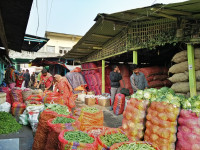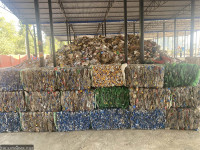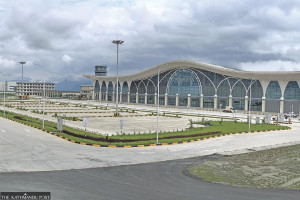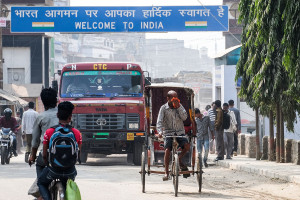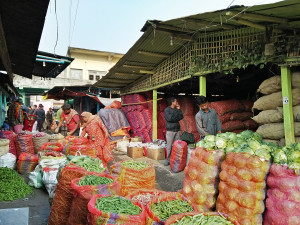Money
What you need to know about the Mobile Device Management System
The IMEI number is shown on the cover of the mobile set, or users can dial *#06# to find out their IMEI number and register it, if it is not already registered.
Krishana Prasain
The Nepal Telecommunications Authority is all set to introduce the Mobile Device Management System, a security software that enables the regulator to implement policies that secure, monitor and manage end-user mobile devices from July 16, the beginning of the next fiscal year.
After the new system kicks in, it will basically eliminate mobile imports from the grey market and phones sold without a bill and warranty. This means that the mobile SIM (subscriber identification module) card on phone sets whose International Mobile Equipment Identity (IMEI) number has not been registered by then will not work. Nepal’s telecom regulator has set a length of time for people who own such mobile phones to register them so that service will not be interrupted.
Here is what you need to know about the new system.
What is the Mobile Device Management System?
The Mobile Device Management System is a security software that enables the telecom regulator to implement policies that secure, monitor and manage end-user mobiles. The government has built a centralised system that keeps a record of mobile devices after their International Mobile Equipment Identity (IMEI) number is registered with it. Every mobile phone has a unique 15-digit IMEI number. For dual SIM phone sets, there are two IMEI numbers. The primary software for the system will be installed at the Chabahil office of the Nepal Telecommunications Authority from where the system will operate.
Why is it important?
“We have been hearing of several accidents caused by mobile phones while using them. There have been several incidents of mobile sets exploding when they were recharged for a long time,” said Achyuta Nand Mishra, deputy director at the authority. “There have been some accidents when mobile sets blew up when they were kept in clothes pockets. This is caused mainly when the device is of low quality and has been manufactured without meeting the required standards,” he said. “The system will help in importing genuine mobile devices that meet quality and standards.”
The system helps in detecting lost or stolen phones and importing genuine quality phones. Mishra said that the system helps in importing mobile devices as per mobile standards determined by the International Telecommunication Union. Criminal activities through the use of mobile phones will also be controlled.
“The system will completely end the import of grey mobile sets contributing to the government’s revenue collection,” said Santosh Poudel, director at the telecommunications authority. The government has been losing revenue because of the illegal import of phones.
The system will also increase the government’s revenue as tens of thousands of mobile sets are imported from the grey market, a market where phones are sold without a bill and warranty. People just bring them in bags, cargo and their clothes pockets. Similarly, tens of thousands of mobile devices are brought as gifts from foreign countries annually. The government charges 2.5 percent excise duty and an additional 13 percent VAT on each mobile phone imported into Nepal.
How is a genuine product verified?
The IMEI number of officially imported mobile phones or phones imported by paying taxes is initially registered by the importing company. Customers who have purchased mobile phones from importers do not have to register their sets.
Before any phone can be imported into Nepal, the telecom regulator gives a type approval of the phone sets. The authority looks at the lab report of the mobile phone sets. After a mobile phone has been manufactured, the company needs to obtain the IMEI number from the Global System for Mobile Communication (GSM). The importer will send the list of IMEI numbers to the authority, and the authority will verify it. The authority then checks the IMEI number with the data of the GSM. If it’s good, the authority provides a no objection letter to the customs, and the customs office will check whether the mobile that has been imported is IMEI listed or not. This way, the system helps to ensure that genuine devices are imported.
Once the phone is connected to the mobile network, the IMEI number is detected with the help of the system. If the mobile has not arrived through formal channels, then it will be blocked. So to use a mobile phone, it needs to be registered.
Who has to register and who doesn’t need to?
Customers who have purchased their sets from importers do not have to register their phones. Mobile devices enter the country through different channels besides legal importers. Travellers coming from abroad bring their personal phones while others also bring phones to give as gifts.
After the implementation of the system, the IMEI number of the mobile phones used by travellers need to be registered if they use SIM cards issued by domestic telecom service providers.
Travellers using roaming service on their phones do not need to register them. Customers who are using mobile phones that were brought as gifts from foreign countries and whose IMEI number has not been registered till now will be provided a certain time to do so.
Similarly, mobile devices that were purchased from the domestic market but were imported through the grey market by traders too have to be registered.
The IMEI number is shown on the cover of the mobile set or users can dial *#06# to find out their IMEI number. Users can verify whether their IMEI number has been registered or not by visiting the authority's website www.nta.gov.np and going to the registration portal. If the IMEI number is verified, the customer need not register it again; but if the IMEI number is not verified, it has to be registered. The verifying portal is currently out of service due to heavy traffic. The authority said the system would come into operation again soon.
What after July 16?
According to the Department of Customs, people will be allowed to bring two mobile devices with them after July 16—one in use and another one extra or as a new phone set. “If they bring more than that, they have to pay the customs duty by submitting the purchase bill,” said Shishir Ghimire, spokesperson for the customs.
What’s the size of the mobile market in Nepal?
Sanjay Agrawal, vice-president of the Mobile Phone Importers’ Association, said that looking at the customs data, there has been a significant rise in government revenue collection after the lockdown was enforced. This is because mobile sets stopped coming into the country from the grey market following travel and transportation bans. According to the Department of Customs, the country imported mobile phones worth Rs34.14 billion in the first 11 months of the current fiscal year. In the same period in the last fiscal year, imports amounted to only Rs15.74 billion.
The country imported 4.3 million units of mobile phones in the last fiscal year 2019-20, and around 40 percent of them came through the grey channel, according to traders. Dealers say that once the system is enforced, mobile sets may become costlier, particularly at the outlets of traders who have been importing them from the grey market.
Does the system track other information or violate the privacy of phone users?
The system will only track the device information and not other matters, according to the authority.




 16.12°C Kathmandu
16.12°C Kathmandu

